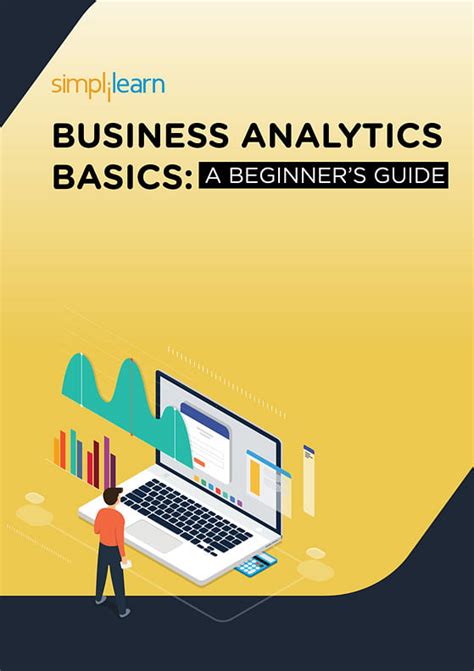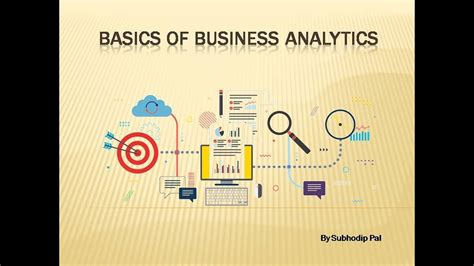Cloud computing has revolutionized the way individuals and organizations manage, store, and process data, offering unprecedented flexibility and scalability. As more businesses and users migrate to the cloud, understanding the fundamental concepts is crucial. This beginner’s guide explores essential cloud computing concepts, from basic definitions to deployment models, key benefits, and common applications. We will delve into various cloud services, including Infrastructure as a Service (IaaS), Platform as a Service (PaaS), and Software as a Service (SaaS), while also addressing important security considerations. Whether you’re new to cloud computing or looking to deepen your knowledge, this guide provides a solid foundation for navigating the cloud’s vast and evolving landscape.
Let’s investigate this topic extensively with uzocn.com
1. Definition of Cloud Computing
Cloud computing is a technology that allows users to access and store data, applications, and services over the internet, rather than relying on local servers or personal computers. By leveraging remote servers hosted in data centers, cloud computing provides on-demand access to a shared pool of computing resources, including storage, processing power, and networking. This model enables users to scale resources up or down based on their needs, without the burden of maintaining physical infrastructure.
At its core, cloud computing is defined by its ability to deliver computing services in a flexible, scalable, and cost-effective manner. Users pay for only what they use, making it a practical solution for both individuals and businesses. The cloud is categorized into three main service models—Infrastructure as a Service (IaaS), Platform as a Service (PaaS), and Software as a Service (SaaS)—each offering different levels of control and management. Overall, cloud computing represents a shift from traditional IT infrastructure to a more dynamic, service-oriented model.

2. Types of Cloud Services (IaaS, PaaS, SaaS)
Cloud computing services are classified into three primary categories: Infrastructure as a Service (IaaS), Platform as a Service (PaaS), and Software as a Service (SaaS).
Infrastructure as a Service (IaaS) delivers the foundational components of IT, enabling users to access virtualized computing resources online. This approach allows users to lease servers, storage, and networking resources on a flexible pay-per-use model, granting them complete control over their infrastructure without the burden of managing physical hardware.
PaaS, taking things a step further, provides a platform that encompasses not only infrastructure but also tools and services specifically designed for the development, testing, and deployment of applications. This model empowers developers to concentrate solely on coding, freeing them from the complexities of managing underlying infrastructure.
SaaS, or Software as a Service, provides software applications through the internet on a subscription model. Users gain access to these applications via a web browser, eliminating the need for them to manage backend maintenance, updates, and infrastructure. The provider takes care of all these aspects.
These service models provide varying degrees of abstraction, enabling organizations to select the optimal solution tailored to their unique requirements and technical capabilities.

3. Cloud Deployment Models (Public, Private, Hybrid, Multi-cloud)
Cloud deployment models define how cloud services are made available to users and are categorized into four main types: Public, Private, Hybrid, and Multi-cloud.
Public cloud services are provided by third-party vendors over the internet and are shared among multiple organizations. They offer scalability and cost-effectiveness, making them ideal for businesses that do not need to manage sensitive data or applications.
Private cloud is dedicated to a single organization, providing greater control, security, and customization. It can be hosted on-premises or by a third-party provider but is not shared with other organizations. This model is suitable for businesses with strict regulatory or security requirements.
Hybrid cloud combines both public and private clouds, allowing data and applications to be shared between them. This model offers flexibility, enabling organizations to keep sensitive workloads in the private cloud while utilizing the public cloud for less critical resources.
Multi-cloud involves using services from multiple cloud providers simultaneously. This approach reduces dependency on a single vendor and allows organizations to optimize performance, cost, and redundancy across different environments.
Each deployment model offers unique advantages, allowing businesses to choose the best fit for their operational needs.

4. Key Benefits of Cloud Computing
Cloud computing offers numerous benefits that make it an attractive option for individuals and businesses alike. One of the primary advantages is scalability, allowing users to adjust resources quickly and efficiently based on demand, without the need for significant upfront investment in hardware.
Cost savings is another key benefit, as cloud services operate on a pay-as-you-go model, reducing capital expenses and enabling organizations to only pay for what they use. Additionally, flexibility is enhanced, with users being able to access applications and data from any location with internet connectivity.
Cloud computing also improves collaboration by enabling teams to work together in real-time across different geographies. Security is often more robust than traditional on-premises solutions, with cloud providers investing heavily in advanced security measures and compliance standards.
Finally, automatic updates and maintenance ensure that systems are always up-to-date, reducing the burden on IT staff and allowing businesses to focus on their core activities. These benefits collectively make cloud computing a powerful tool for modern organizations.
5. Common Use Cases and Applications
Cloud computing has become indispensable in various industries because of its versatility and extensive range of applications. One common use case is data storage and backup, where companies store large volumes of data in the cloud. This provides accessibility and disaster recovery capabilities without the need for extensive on-site infrastructure.
Cloud computing plays a crucial role in software development and testing. By offering scalable platforms, cloud environments empower developers to build, test, and deploy applications swiftly, resulting in faster time-to-market and reduced costs. Furthermore, cloud services are widely used for web hosting, enabling websites and online applications to adapt effortlessly to varying user traffic levels.
Cloud computing shines in the realm of big data analytics. By leveraging the cloud, companies can process and analyze vast datasets, gaining valuable insights to guide business decisions. This eliminates the need for expensive, powerful local hardware. Furthermore, machine learning and AI applications are becoming increasingly dependent on cloud infrastructure. This is due to the cloud’s ability to provide the computational power and frameworks necessary for developing and deploying intelligent applications.
Cloud-based collaboration tools, encompassing file sharing, video conferencing, and project management software, empower businesses with remote or distributed teams to streamline communication and manage workflows effectively.
Cloud-based disaster recovery solutions offer a vital safeguard, ensuring rapid restoration of essential data and systems in the event of an outage. This swift recovery minimizes downtime and mitigates the impact on business operations.
6. Security Considerations in Cloud Computing
Security is a crucial consideration in cloud computing, as sensitive data and critical applications are often stored and processed off-premises. One of the primary concerns is data breaches, where unauthorized access to data can lead to significant financial and reputational damage. Cloud providers implement advanced security measures such as encryption, multi-factor authentication, and regular security audits to mitigate these risks.
Data privacy and compliance are also major concerns, especially for organizations handling personal or regulated data. It’s essential to ensure that the cloud provider complies with relevant regulations like GDPR or HIPAA, depending on the industry. Understanding where data is stored and how it is managed is vital for maintaining compliance.
Another important aspect is identity and access management (IAM). By controlling who can access what within the cloud environment, organizations can reduce the risk of insider threats and unauthorized access. Shared responsibility is a key principle in cloud security; while providers secure the infrastructure, users must secure their applications and data.
Finally, disaster recovery and incident response planning are essential. Organizations should ensure they have strategies in place for responding to security incidents, including data loss or service disruptions, to minimize impact and ensure business continuity.
7. Major Cloud Service Providers (AWS, Azure, Google Cloud)
Three major cloud service providers dominate the market: Amazon Web Services (AWS), Microsoft Azure, and Google Cloud Platform (GCP).
Amazon Web Services (AWS) is a pioneer in the cloud computing space, offering a comprehensive suite of services, including computing power, storage, and databases. AWS is known for its extensive global infrastructure, scalability, and broad range of tools for various applications, from machine learning to analytics.
Microsoft Azure is another leading provider, integrating seamlessly with Microsoft products and services. Azure offers a wide array of solutions, including virtual machines, app services, and AI capabilities. Its hybrid cloud approach allows organizations to connect on-premises data centers with cloud resources, providing flexibility and scalability.
Google Cloud Platform (GCP) is recognized for its strength in data analytics, machine learning, and artificial intelligence. GCP provides robust tools for big data processing, data warehousing, and real-time analytics. Its open-source compatibility and strong focus on innovation make it a preferred choice for developers and enterprises seeking advanced technology solutions.
Each provider has its strengths, and organizations often choose based on specific needs, such as service offerings, pricing, and integration capabilities.
8. Basics of Cloud Architecture
Cloud architecture consists of several core components that work together to deliver cloud services effectively. At its foundation are cloud infrastructure, which includes physical servers, storage devices, and network equipment located in data centers. This infrastructure is virtualized to create the virtual machines (VMs) and other resources used by cloud services.
Cloud services are typically divided into layers, including the compute layer, which provides processing power through virtual machines or containers, and the storage layer, which handles data storage and retrieval. The network layer manages connectivity and ensures data can flow efficiently between components and users.
Cloud management tools are essential for orchestrating and managing these resources, allowing users to provision, monitor, and scale services as needed. Additionally, security measures such as firewalls, encryption, and access controls are integrated into the architecture to protect data and applications.
APIs (Application Programming Interfaces) enable interaction between different cloud services and applications, facilitating seamless integration and automation. Overall, cloud architecture is designed to be flexible, scalable, and resilient, supporting a wide range of applications and workloads.
9. Cost Management in Cloud Computing
Effective cost management is critical for cloud computing, as it optimizes expenses and ensures budget adherence. Cloud services often utilize a pay-as-you-go model, directly linking costs to resource usage. To effectively manage these costs, organizations should implement a range of strategies.
First, monitoring and tracking usage is critical. Most cloud providers furnish tools and dashboards that enable real-time tracking of resource consumption and expenditure. Regularly examining these metrics allows organizations to pinpoint areas of potentially excessive costs and implement appropriate adjustments.
Right-sizing resources means choosing the right amount and kind of cloud resources for your current requirements. Using more resources than needed (over-provisioning) can lead to wasteful spending. It’s crucial to regularly check and modify resource allocations to align with actual usage.
By implementing cost alerts and budgeting tools, businesses can effectively prevent overspending. These alerts, triggered when spending reaches predetermined thresholds, empower proactive management and budgeting strategies.
Reserved instances and commitment plans offer cost savings over on-demand pricing. These plans involve committing to a specific amount of usage for a set time, which often leads to substantial discounts.
Implementing cost optimization best practices, such as utilizing spot instances for non-critical workloads and consolidating billing across accounts, can significantly decrease expenditures and enhance overall cost efficiency.
10. Future Trends in Cloud Computing
The future of cloud computing is set to be shaped by several emerging trends that promise to enhance capabilities and drive innovation. Edge computing is gaining traction, bringing computation and data storage closer to the location where it’s needed, thus reducing latency and improving performance for real-time applications, such as IoT devices and autonomous vehicles.
Serverless computing is another growing trend, enabling developers to build and run applications without managing server infrastructure. This model abstracts away the underlying servers, allowing for automatic scaling and billing based on actual usage, which can streamline development and reduce costs.
Artificial Intelligence (AI) and Machine Learning (ML) are increasingly integrated into cloud services, offering advanced analytics and automation capabilities. Cloud providers are enhancing their platforms with AI and ML tools to enable more sophisticated data processing and predictive insights.
Quantum computing is on the horizon, promising to revolutionize fields that require immense computational power, such as cryptography and complex simulations. As quantum technologies advance, they are expected to be offered through cloud platforms, making them accessible for a broader range of applications.
Lastly, the focus on sustainability is growing, with cloud providers investing in green technologies and practices to reduce their environmental impact. These trends reflect a shift towards more efficient, intelligent, and environmentally conscious cloud computing solutions.
Cloud computing continues to transform how we manage and access technology, offering scalability, flexibility, and cost-efficiency. Understanding the fundamentals, from service types to security and future trends, equips users to leverage cloud solutions effectively. Embracing these concepts ensures optimized performance and innovation in the evolving digital landscape.
uzocn.com


